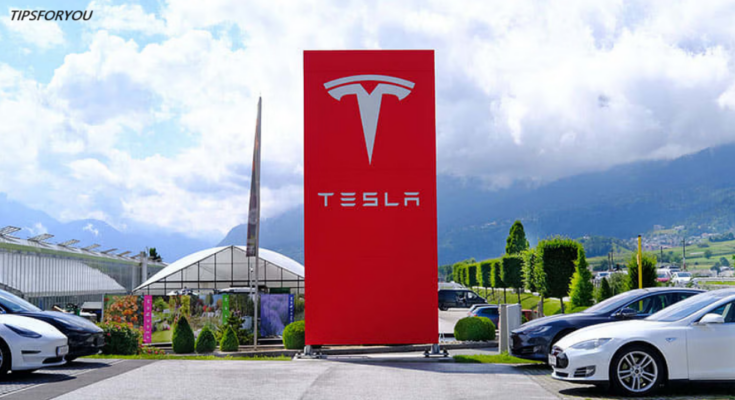The Tesla marketing strategy is a multidimensional approach that integrates many elements to produce a distinctive brand experience. It is nothing short of revolutionary. In developing a strategy that enthralls its target audience and the industry as a whole, Tesla appears to have spared no effort, from product innovation to brand positioning, digital marketing to customer involvement.
Elon Musk, the company’s founder, is known for his innovative ideas and creative culture, which are the foundation of Tesla’s marketing approach. Because of this culture, Tesla has become a market leader and innovator in the electric vehicle business by producing cutting-edge electric vehicles.
Goals & Objectives for Tesla’s Marketing
Tesla has made a name for itself as a leader in the world of electric car technology because of its cutting-edge construction, creative designs, and commitment to a cleaner future. To maintain its competitive advantage and strengthen its brand, Tesla has established extensive marketing goals and objectives.
Increase Recognition of Your Brand
Despite recent attention, Tesla wants to become a household name in the automotive business and enhance brand recognition. The company promotes its eco-friendly car technology and brand using a variety of marketing strategies, such as word-of-mouth promotion and participation in prestigious events and trade exhibits. Its objective is to strengthen public support for and understanding of Tesla’s environmentally friendly values.
Increase Market Capability
In order to reach unexplored areas and target demographic groups who do not completely utilize electric automobiles, Tesla is broadening its market reach. The corporation ensures consistent growth and maintains its position as the industry leader by doing market research, establishing regional sales and service networks, and consistently introducing automobiles to cater to various market segments and price points.
Boost Revenue and Sales
To achieve sustainable growth, Tesla aims to gradually raise sales and revenue. To achieve this, the company uses marketing tactics such as effective advertising campaigns, a direct-to-consumer sales model, and continuous exploration of new markets and partnerships. These strategies focus on creating demand for Tesla’s unique features, streamlining the purchasing process, and driving innovation to maintain market dominance.
Increase Your Market Share
Leading electric vehicle manufacturer Tesla is up against both established manufacturers and newer firms. In order to sustain its market position, the company prioritizes product differentiation, allocates resources towards research and development to improve vehicle range and performance, and broadens its worldwide manufacturing and distribution network to increase product accessibility.
Make Tesla a Lifestyle Brand
Tesla aims to become a symbol of innovation, sustainability, and luxury by positioning itself as a lifestyle brand. The company uses premium branding and marketing initiatives, featuring sleek designs and futuristic technology, to appeal to those who value style and performance. It also collaborates with fashion and lifestyle influencers to reach broader audiences and associate the brand with desirable lifestyles. This strategy expands Tesla’s consumer base beyond traditional car buyers.
What Marketing Strategies Does Tesla Use?
Tesla’s marketing strategies focus on sustainable innovation and revolutionizing the automotive industry. They use branding, market segmentation, pricing, distribution, promotion, customer relationship management, and sustainability efforts to position themselves as a leader.
Sustainable Innovation as a Differentiator
Tesla is a global leader in electric vehicles (EVs) and is well-known for its innovative ecologically friendly products. Its electric drivetrains, cutting-edge battery technology, and autonomous driving capabilities are all intended to completely transform the automotive sector.
Branding Strategy
Tesla’s branding strategy focuses on creating a premium, visionary EV brand with a focus on sustainability and environmental consciousness. The company’s logo, futuristic designs, and innovative technology shape its identity. Tesla’s products clearly demonstrate the company’s dedication to reducing carbon emissions and using renewable energy. The brand also encourages customer engagement, building brand loyalty and advocacy for continued market success.
Segmenting the target market
Tesla targets environmentally conscious consumers with higher incomes and higher education who value sustainability and innovative technology. The company attracts early adopters passionate about cutting-edge technology, generating word-of-mouth marketing. Tesla aims to expand its target market beyond early adopters, targeting performance, luxury, and sustainable transportation options through targeted marketing efforts.
Pricing Method
Tesla’s pricing strategy focuses on positioning itself as a premium brand in the EV market, offering both high-end and affordable models. This strategy is influenced by factors like production costs, market demand, and government incentives and is regularly revised for competitiveness.
Distribution Plan
Tesla’s distribution strategy is direct-to-consumer, selling vehicles through company-owned showrooms and the company’s website. This vertical integration eliminates intermediaries, maintains control over the customer experience, and captures valuable data. Tesla’s showrooms offer physical experience, knowledgeable sales, and event hosting.
Conclusion
Tesla’s marketing strategy, focusing on innovation, sustainability, and customer experience, has led to its market dominance. Utilizing digital media and word-of-mouth, the company has generated buzz and a loyal customer base. Despite challenges in affordability and market reach, Tesla’s marketing strategy aligns with its long-term goals of revolutionizing the automotive industry and achieving sustainable transportation.



